After having stayed in the salt refuge last night, i'm pleased to say that it's surprisingly quite warm, well I was much warmer than the night before. Those blocks of salt keep the building well insulated. We had to be up at the unsightly hour of 4am this morning because we are to watch the sun rise over Incahuasi Island. We packed up and set off in the dark to reach our final destination, the salt flats. I was still so tired, I tried to drift off to sleep in the car, to no avail. It took us about an hour to arrive at the island.
Sunrise over Incahuasi Island
We arrived at Incahuasi Island just in time to see the sun rise
. We had to climb up lots of coral rocks and steps to make it to the highest viewpoint on the island. We perched ourselves on some rocks and sat waiting for the sun to come up. Not long after we arrived, we were greeted by a cute German shepherd dog. It stayed with us to watch the daily morning spectacle. We were rewarded with a beautiful sun rise right over the salt flats. It was so peaceful up there, I would've stayed longer if it weren't for the biting cold. After the sun rose, it became much warmer.
Incahuasi Island
It's an island I haven't heard about before, but it's actually located on the salt flats. The name of the island means Inca house. Incahuasi Island was used as a resting place for the Incas who crossed the lake with llamas loaded with goods for trade in Chile, which borders about 150 km to the west, and other countries. Set on the remains of a volcano, Incahuasi Island is a rocky formation of basalt and regolith that contains remains of corals and seashells: proof that the vast salt was once a sea full of life, which I find incredible
. We continued to go and explore the island, the dog was in hot pursuit.
Cactuses
You couldn't help fail to notice that there were so many huge cactuses all dotted around the island, they looked so cool. Giant Echinopsis Atacamensis Pasacana cacti cover the surface of Incahuasi Island in the centre of the Salar. It is estimated that they grow at around 1cm a year on average; the tallest specimen on the island is over 12 feet tall. We looked around the island and there were loads of volcanic rocks, which had been spewed from the nearby volcano. The whole island is surrounded by coral rocks. It's a tiny island, which overlooks the salt flats. It looks like a white expanse of snow. The cactuses here are like no other, they are the biggest ones i've ever seen anyway, although Galápagos did have some fairly tall ones. I just couldn't stop taking pictures of the them. Most of them seemed to have budding cactus flowers on, which looked pretty. We were lucky enough to see a tiny yellow and grey bird land on one of the cactus flowers
.
Practice pictures on the salt flats
Once we'd done enough exploring around the island, we had breakfast right on the salt flats. Janet had prepared the breakfast from the back of the jeep, which was pretty impressive. We even had cake for breakfast. The little yellow bird also liked the cake, as it was helping itself on the next table. We ate the delicious breakfast and afterwards, we were able to go explore the salt flats. This section was near land, so you couldn't just see the endless expanse of white land I was expecting. The cute dog followed everyone to the salt flats and was running about the vast landscape. I wanted to practise taking pictures as we've never taken any perspective shots before. We happened to have a bottle of water with us, so we put it in position and started to snap away.
It was actually a lot harder to line things up and get them in perspective than I thought it would be, and on our first attempt, the pictures didn't really come out that good
. We either got ourselves in focus, or the bottle, it was so difficult. However, at least we got to mess about taking those kind of pictures. On the salt flats, they are building some bricks made out salt, which was being made into a brick wall, it looked pretty cool. It's amazing how they can make buildings out of salt, like the hostel we stayed in last night. Our jeep came to pick us up from the salt flats to continue on to a section much deeper into the flats. When we started to drive, the little dog that had been following us, started to chase after the jeep and it was really going for it, and managed to keep up with us for ages, even when we were speeding up a lot. Only when Carmelo, our driver, put his foot down, we lost sight of the dog, it was running with such speed.
Salar de Uyuni
The Salar de Uyuni in southwest Bolivia is the world’s largest salt flat (often called a salt lake). which covers 10,582 square kilometers (4,086 sq mi). The salt is more than 10 meters thick in the centre
. The salt flats and shallow lakes on the Bolivian altiplano are the remnants of Lake Minchin, a huge prehistoric lake that dried out. When these lakes dried up many thousands of years ago, their rich salt content was left behind, and it became the thick salt crust that coats the region today. It is an important source of sodium, magnesium, potassium and especially lithium - it is estimated that 50% of the world's lithium reserves are found here which the government plans to exploit commercially.
During the rainy season, most of the enormous salt flat is covered by shallow water, as rain has nowhere to drain. These few inches of water have a sparkling effect on the landscape, transforming the plane into one endless mirror that reflects the sun, sky, clouds, visitors and the pink flamingos which live in the area. The region is 11,995 feet above sea level, making it an ideal place to monitor and calibrate satellites. The incredible clouds often break to clear skies, with blue and white reflected below
. Salar de Uyuni sees a lot of traffic ranging from tourists to companies coming to mine the layers of salt, potassium, lithium and magnesium from the surface. It is also a major car transport route during the dry seasons. Salar de Uyuni is a beautiful natural mirror, but also an important source from salt and lithium, which is a vital component in electric batteries.
The cool salt flat pictures
So now we're in the deepest part of the salt flats. When we got out of the jeep, I was in awe, there was a white canvas that stretched as far as the eye could see. This is where we'd be taking the creative pictures, so we had to get our props ready. I'd thought of a load of props that I wanted to use, so I gathered them together in a bag. Janet said they would help us to create the shots we wanted, or if we couldn't think of ideas, they would help us with that too. So John and myself started off messing about doing some of our own shots with the props. When we looked at the pictures, they didn't look too good, but when Carmelo came and helped us, there was a dramatic improvement in the pictures
. The other two people in our group did their own thing at the start, but afterwards, we suggested that we do a few group pictures.
I started bringing out my props, make-up, hair products, hand cream and some Bolivian doll key rings. I tried using the Bolivian ones first, but as they are so small, it didn't work well, so it's best to use slightly bigger props to get any good effects. The guide had some dinosaur props in the car, and i've seen loads of pictures using that, so I wasn't keen on using it for my pictures, but John wanted to, so we did. They also had the spoon, which most people have the picture where it looks like you're eating someone, so we also did that one too. John got one where he was picking me up like a little doll, I got one where i'm blowing him away, we got some cool ones where we look like we're wearing massive boots, and my favourite of John is where he's jumping over the jeep and we're all underneath looking frightened. John jumped so high, that it just looked so good the picture
. We also got a group picture of us all trying to sky dive, which was pretty cool, but hard to lay on the salt ice posing for it! My favourite one of me is where i'm laying on my Batiste dry hair shampoo can.
We've all had such a fun morning trying to get the shots, but they are really hard to compose, unless you have someone who knows what they are doing. Without our guide and driver, we probably wouldn't have got that many pictures. Being on the salt flats, was like walking on snow. However the reality was, that it was extremely hot because the sun was reflecting the white light of the salt. I had heard that it would be really cold here, but at the start of December, it was pretty warm. We must have stayed here taking our pictures for about an hour and a half, the time passed by pretty quickly. When it was time to leave the salt flats, I wanted to stay here longer. I wish we'd experienced the Salar in the rainy season when you get a mirror-like reflection of the flats, but what we have experienced has been amazing
.
The salt hotel and salt mounds
So when we finished taking our pictures, we got driven to the illegal salt hotel. It's illegal because it's the only hotel right on the salt flats, and no buildings are supposed to be here. When we got here, they are actually knocking it down to re-build it. It's allowed to exist because the owner is friends with the government, who allow them to have the building here. I thought that it would be a lovely posh hotel, better than the salt refuge we stayed in last night, but it's actually a dirty, old run down building that you wouldn't actually want to stay in. We didn't even go inside, only wander around outside.
Outside, there are lots of flags from different countries, which are here to represent the Dakar Rally, which is being held in Bolivia early next year. There was no sign of the British flag, the closest territory to us was the Irish and Scottish flags. From here we got driven to the salt mounds. Apparently, the salt exported from here is only for use in Bolivia and is not transported to any other countries
. They must produce tonnes of salt each year. When we got there, there were huge piles of salt. It's a really simple process to get the salt too. They basically dig up a pile of salt, leave it there to dry out for a few days, then when it's dried out they can send it to the factories to get packaged up- a simple but effective process. After this we drove slightly further to some salt/ ice water. There were a couple of people bathing because they think it cures rheumatism. I went and put my feet and arms in the water, it was so salty and once I took my hands out, they felt all dry and my hands were stinging. The salt water is suppose to be good for your skin too, so hopefully i'll have lovely soft hands after this. Once we left the salt flats, we drove past some brown muddy salt, this is what the salt becomes like after it rains.
The train graveyard
I said farewell to the Salar and we headed into Uyuni, which Janet told us it's a sight for sore eyes, there was a ton of rubbish dumped there
. However the situation is drastically improving because the Dakar rally is coming through Uyuni next year, so they are gradually clearing tons of rubbish. As we drove towards the town, it looked like a dumping ground, it's sad to see so much garbage around a place, it really spoils it. Even without the rubbish here, Uyuni isn't such a nice place, unfortunately. I'm glad we started our tour from Tupiza because it's much nicer scenery around this area.
So anyway the reason for coming is because the train graveyard is here in Uyuni, it's where the abandoned old trains get left. Some of the trains were made in England and France apparently, but they are ending their lives here in Bolivia. These trains were among some of the first trains to run in Bolivia. Now i'm not a train spotter, but when we got to the train graveyard, it was actually pretty cool looking at all the old trains. A lot of them have not been graffitied and have writing all over them. Some are used for advertising, as one train had been pained about the Dakar Rally 2014.
We walked all around, and it didn't really feel like a graveyard to be honest. John loved seeing the trains and messing round with the wheels, pretending to lift weights. As he likes climbing, he hauled himself up inside some of the trains. What I though was cool was the couple of swings that they had here in the graveyard. When one became free, we sat and swung on them like a couple of kids, it was great fun
. I felt like we wouldn't stay here too long because our guide and driver were still in the car, but this place is wicked, even if it is just a bunch of retired trains! After we leave here, our tour ends with some lunch.
Lunch and goodbyes
We got driven to somewhere we would be having our last supper. Carmelo, our driver has been so obliging to take us places and drove us to a cash point and also drove us, Libby and Dave to book our bus tickets out of here. We are heading to San Pedro in the Atacama desert, and Dave and Libby are going to La Paz. That was really sweet of him, as he didn't need to do that. Once we'd sorted out the tickets, we went back for lunch. The place we had lunch, wasn't particularly nice, but it was good to have lunch with everyone to say goodbye to them. The driver and guide certainly work hard, they have a 6 hour drive back to Tupiza tonight and then they will probably be starting a new tour tomorrow. I don't know how they do it, they are always on the go.
After lunch, they dropped us to the bus terminal and we said our goodbyes. We gave them a good tip, as they've done a great job, and we've really enjoyed it. We've seen some stunning scenery in 4 days, plus lots of wildlife, so it's definitely been one of the most enjoyable tours i've been on. I'm sad to be finishing this tour, as this also means our time in Bolivia has come to an end. Now we are taking a private transfer to San Pedro. We drive for a few hours, stay overnight, and then cross the border to Chile tomorrow. We have to wait a few hours before our jeep takes us, so we'll wander around Uyuni for a while. Next stop Chile, Argentina and Brazil in a short space of time....
Salt flats- day 4
Monday, December 02, 2013
 Uyuni, Tahua, Bolivia
Uyuni, Tahua, Bolivia
Other Entries
-
37Machu Picchu- Day 3 a Special Birthday
Sep 2964 days prior Machu Picchu, Peruphoto_camera149videocam 0comment 0
Machu Picchu, Peruphoto_camera149videocam 0comment 0 -
38Machu Picchu- Day 4
Sep 3063 days prior Machu Picchu, Peruphoto_camera135videocam 0comment 0
Machu Picchu, Peruphoto_camera135videocam 0comment 0 -
39Juanita the frozen ice maiden
Oct 0459 days prior Arequipa, Peruphoto_camera48videocam 0comment 0
Arequipa, Peruphoto_camera48videocam 0comment 0 -
40Colca Canyon 3 day adventure
Oct 0756 days prior Colca Canyon, Peruphoto_camera249videocam 0comment 0
Colca Canyon, Peruphoto_camera249videocam 0comment 0 -
41Lake Titicaca and the Uros floating reed islands
Oct 1350 days prior Puno, Peruphoto_camera77videocam 0comment 0
Puno, Peruphoto_camera77videocam 0comment 0 -
42Isla Del Sol -Lake Titicaca and Copacabana
Oct 1647 days prior Isla del Sol, Boliviaphoto_camera100videocam 0comment 0
Isla del Sol, Boliviaphoto_camera100videocam 0comment 0 -
43Highest capital city and 1st roast dinner
Oct 1944 days prior La Paz, Boliviaphoto_camera88videocam 0comment 0
La Paz, Boliviaphoto_camera88videocam 0comment 0 -
44Welcome to the jungle
Oct 2340 days prior Rurrenabaque, Boliviaphoto_camera35videocam 0comment 0
Rurrenabaque, Boliviaphoto_camera35videocam 0comment 0 -
45The hunt for anacondas, alligators and piranhas!
Oct 2439 days prior Rurrenabaque, Boliviaphoto_camera128videocam 0comment 0
Rurrenabaque, Boliviaphoto_camera128videocam 0comment 0 -
46Inti Wara Yasi animal sanctuary volunteer work
Nov 0131 days prior Villa Tunari, Boliviaphoto_camera222videocam 0comment 0
Villa Tunari, Boliviaphoto_camera222videocam 0comment 0 -
47The Balu's Brothers
Nov 0230 days prior Villa Tunari, Boliviaphoto_camera32videocam 0comment 0
Villa Tunari, Boliviaphoto_camera32videocam 0comment 0 -
48Birds of Inti Wara Yasi
Nov 1517 days prior Villa Tunari, Boliviaphoto_camera30videocam 0comment 0
Villa Tunari, Boliviaphoto_camera30videocam 0comment 0 -
49Rest, recuperation and relaxation....
Nov 239 days prior Cochabamba, Boliviaphoto_camera43videocam 0comment 0
Cochabamba, Boliviaphoto_camera43videocam 0comment 0 -
50Horsing around on the Butch Cassidy film set
Nov 275 days prior Tupiza, Boliviaphoto_camera111videocam 0comment 0
Tupiza, Boliviaphoto_camera111videocam 0comment 0 -
51Salt flats- day 1
Nov 293 days prior Tupiza, Boliviaphoto_camera57videocam 0comment 0
Tupiza, Boliviaphoto_camera57videocam 0comment 0 -
52Salt flats - day 2
Nov 302 days prior Laguna Colorada, Boliviaphoto_camera162videocam 0comment 0
Laguna Colorada, Boliviaphoto_camera162videocam 0comment 0 -
53Salt flats- day 3
Dec 011 day prior Tupiza, Boliviaphoto_camera170videocam 0comment 0
Tupiza, Boliviaphoto_camera170videocam 0comment 0 -
54Salt flats- day 4
Dec 02 Uyuni, Boliviaphoto_camera153videocam 0comment 0
Uyuni, Boliviaphoto_camera153videocam 0comment 0 -
55Laguna Cejar- floating /Star gazing Atacama Desert
Dec 031 day later San Pedro de Atacama, Chilephoto_camera97videocam 0comment 0
San Pedro de Atacama, Chilephoto_camera97videocam 0comment 0 -
56Salta feels like Parie
Dec 053 days later Salta, Argentinaphoto_camera28videocam 0comment 0
Salta, Argentinaphoto_camera28videocam 0comment 0 -
57The devils throat proposal....
Dec 075 days later Iguazu Falls, Argentinaphoto_camera176videocam 0comment 0
Iguazu Falls, Argentinaphoto_camera176videocam 0comment 0 -
58Rainy Rio....
Dec 108 days later Rio de Janeiro, Brazilphoto_camera119videocam 0comment 0
Rio de Janeiro, Brazilphoto_camera119videocam 0comment 0 -
59Tangoing and being robbed in Buenos Aires!
Dec 1412 days later Buenos Aires, Argentinaphoto_camera100videocam 0comment 0
Buenos Aires, Argentinaphoto_camera100videocam 0comment 0 -
60Nearly missed the whales....
Dec 1917 days later Puerto Madryn, Argentinaphoto_camera104videocam 0comment 0
Puerto Madryn, Argentinaphoto_camera104videocam 0comment 0 -
61Christmas in Bariloche
Dec 2220 days later Bariloche, Argentinaphoto_camera122videocam 0comment 0
Bariloche, Argentinaphoto_camera122videocam 0comment 0 -
62A flying visit to Santiago
Dec 2826 days later Santiago, Chilephoto_camera13videocam 0comment 0
Santiago, Chilephoto_camera13videocam 0comment 0 -
63New year, new continent - hello New Zealand!
Dec 3028 days later Auckland, New Zealandphoto_camera84videocam 1comment 0
Auckland, New Zealandphoto_camera84videocam 1comment 0 -
64Bay of Islands road trip
Jan 0231 days later Paihia, New Zealandphoto_camera80videocam 0comment 0
Paihia, New Zealandphoto_camera80videocam 0comment 0 -
65Glow worm caves
Jan 0332 days later Waitomo, New Zealandphoto_camera24videocam 0comment 0
Waitomo, New Zealandphoto_camera24videocam 0comment 0 -
66Hobbiton Movie Set Tour
Jan 0433 days later Matamata, New Zealandphoto_camera34videocam 0comment 0
Matamata, New Zealandphoto_camera34videocam 0comment 0 -
67Te Puia Pohutu Geyser- free attraction!
Jan 0534 days later Rotorua, New Zealandphoto_camera114videocam 0comment 0
Rotorua, New Zealandphoto_camera114videocam 0comment 0 -
68Whakarewarewa Village and Redwood forest
Jan 0635 days later Rotorua, New Zealandphoto_camera122videocam 0comment 0
Rotorua, New Zealandphoto_camera122videocam 0comment 0 -
69Colossal squid/ Crossing the Cook Straight
Jan 0837 days later Wellington, New Zealandphoto_camera53videocam 0comment 0
Wellington, New Zealandphoto_camera53videocam 0comment 0 -
70Kaikoura and Hanmer Springs
Jan 1039 days later Hanmer Springs, New Zealandphoto_camera89videocam 0comment 0
Hanmer Springs, New Zealandphoto_camera89videocam 0comment 0 -
71Lake Tekapo, Sceenic Church, Mt Cook/Hooker Valley
Jan 1342 days later Mount Cook National Park, New Zealandphoto_camera116videocam 0comment 0
Mount Cook National Park, New Zealandphoto_camera116videocam 0comment 0 -
72It's a bit chilly in Queenstown
Jan 1443 days later Queenstown, New Zealandphoto_camera76videocam 0comment 0
Queenstown, New Zealandphoto_camera76videocam 0comment 0

 Uyuni, Tahua, Bolivia
Uyuni, Tahua, Bolivia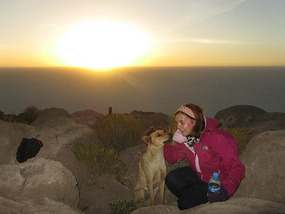


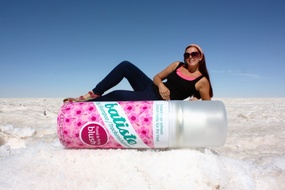
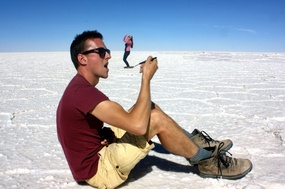
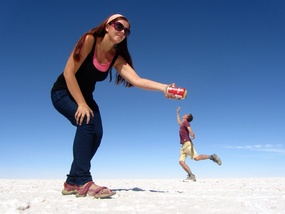
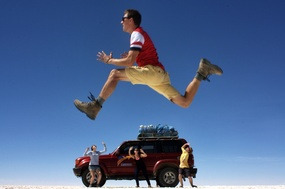
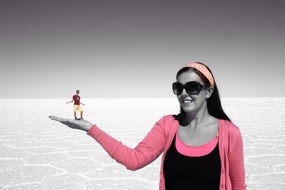
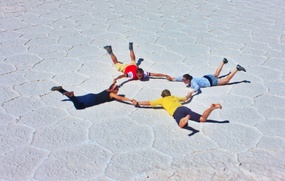
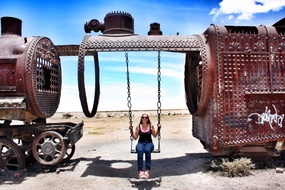
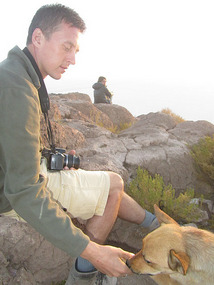
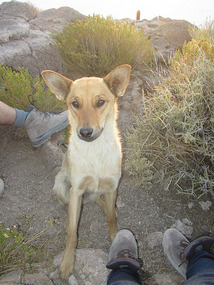






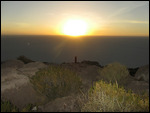
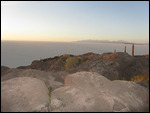
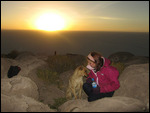
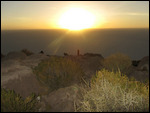
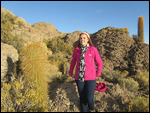
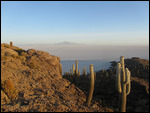























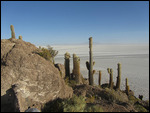

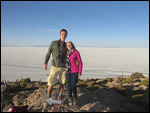
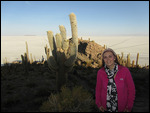
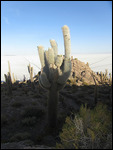
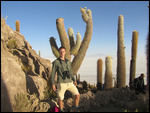
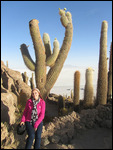
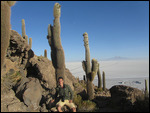
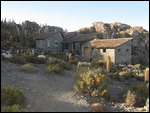
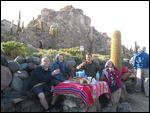
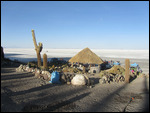
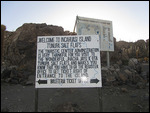
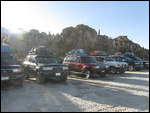

















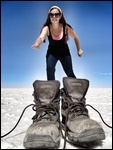
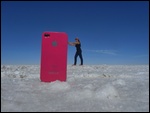
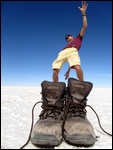
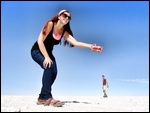
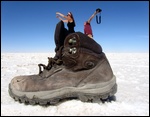
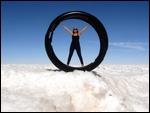
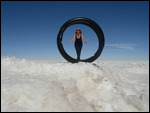

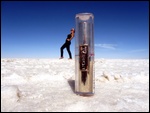
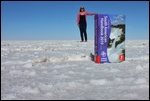

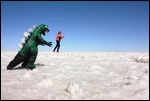
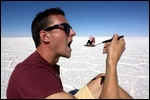
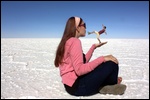
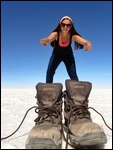
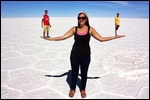
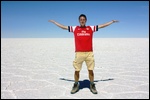
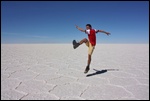
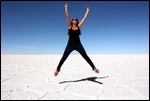
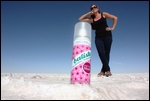
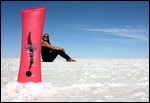
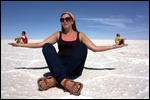
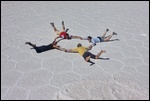
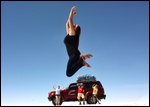
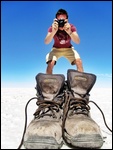
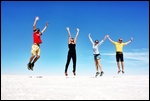
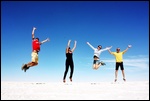
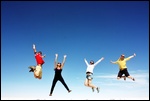
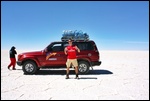
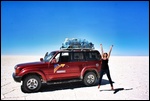
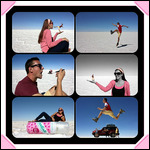
































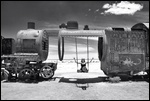


















2025-05-22